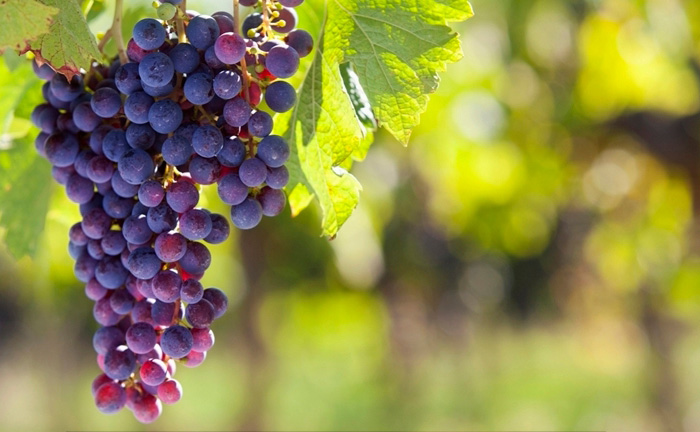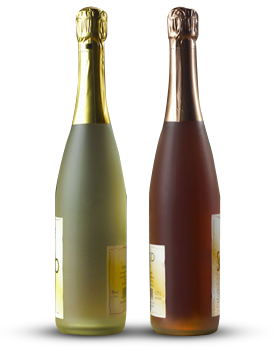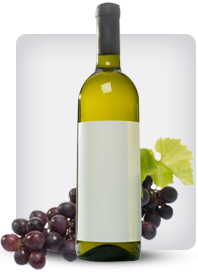

Tag: American
Best Washington State Merlot Under $40: Exceptional Quality Meets Value Washington State has emerged as a powerhouse in the American wine scene, particularly for Bordeaux-style varietals
Posted onAmong these, Merlot stands out for its approachable, velvety character and remarkable consistency. Often offering a more generous, fruit-forward profile than its counterparts from other regions, Washington Merlot delivers exceptional quality at every price point. For the savvy wine enthusiast, the sub- category is a treasure trove of bottles that over-deliver on sophistication, complexity, and pure drinking pleasure. Here are some of the best Washington State Merlots you can find for under .
Why Washington Merlot?
The secret lies in the geography. Washington’s prime wine-growing regions, especially the Columbia Valley and its sub-appellations like Walla Walla and Horse Heaven Hills, benefit from a unique combination of factors: high desert climate with abundant sunshine, cool nights that preserve acidity, and well-drained, sandy-loam soils. This allows Merlot grapes to achieve full phenolic ripeness—developing deep, rich fruit flavors—while maintaining a fresh structure. The result is a wine that is both powerful and polished, with notes of ripe plum, black cherry, dark chocolate, and often a hint of earthy or herbal complexity.
Top Picks:
Washington Merlot Under
1. L’Ecole No. 41 Merlot, Columbia Valley
A benchmark for the region, L’Ecole’s Columbia Valley Merlot is a masterclass in balance. Consistently scoring 90+ points, it offers layered aromas of blackberry, cassis, and mocha, with a palate that is both supple and structured. Its integration of oak and tannin is superb for the price, making it a versatile partner for food or a satisfying solo sip. (Typically -)
2. Columbia Crest H3 Merlot, Horse Heaven Hills
The “H3” stands for Horse Heaven Hills, and this wine is a direct expression of that stellar terroir. It’s a crowd-pleaser for a reason: bursting with juicy black cherry and plum fruit, underscored by notes of vanilla and spice from careful oak aging. It’s incredibly smooth, reliable, and represents one of the best value propositions in American wine. (Typically -)
3. Waterbrook Merlot, Columbia Valley
Waterbrook is renowned for delivering quality and accessibility. Their Columbia Valley Merlot is medium-bodied and elegantly styled, featuring red fruit flavors like raspberry and currant alongside softer tannins and a touch of cedar. It’s an excellent “Tuesday night” Merlot that is consistently well-made and easy to love. (Typically -)
4. Seven Hills Merlot, Walla Walla Valley
For a taste of the esteemed Walla Walla Valley at a friendly price, Seven Hills is a go-to. This Merlot often showcases a slightly more savory, earthy profile alongside its core of dark fruit. Notes of tobacco, olive, or dried herbs can complement the plum and berry flavors, offering a more complex, Old-World-inspired experience. (Typically -)
5. Charles Smith The Velvet Devil Merlot
From the innovative winemaker Charles Smith comes “The Velvet Devil”—a name that perfectly describes its style. This Merlot is all about immediate, hedonistic pleasure. It’s lush, ripe, and velvety on the palate, with pronounced notes of blackberry jam, dark chocolate, and a whisper of smoke. It’s unapologetically delicious and perfect for those who love a fruit-driven style. (Typically -)
6. Pepper Bridge Merlot, Walla Walla Valley
Pepper Bridge is a pillar of the Walla Walla community, and their entry-level Merlot punches well above its weight. It demonstrates the finesse and depth possible in the valley, with structured tannins, balanced acidity, and a blend of dark fruit and mineral notes. It’s a wine that can benefit from a brief decant or even a few years in the cellar. (Typically -)
Tips for Exploring
* Vintage Matters: Washington is generally consistent, but cooler vintages (like 2010, 2011) may yield more structured, elegant Merlots, while warmer years (2014, 2015, 2018) often produce richer, riper wines.
* Decanting: Even affordable Merlots can blossom with 30-60 minutes of decanting, allowing the aromas to open and the texture to soften.
* Food Pairing: Washington Merlot’s balance makes it incredibly food-friendly. Try it with herbed roast chicken, mushroom risotto, grilled pork tenderloin, burgers, or semi-hard cheeses like Gouda.
The Verdict
You don’t need to spend a fortune to experience the quality that has put Washington State on the world wine map. The Merlots in the – range routinely compete with bottles twice their price from other regions. Whether you seek everyday drinkability, sophisticated complexity, or ripe, velvety fruit, there’s a Washington Merlot under waiting to become your new favorite.
Explore, taste, and enjoy—the value and quality in this category are truly something to celebrate.
Organic Zinfandel from Lodi: A Testament to Terroir and Tradition Nestled in the heart of California’s Central Valley, the Lodi American Viticultural Area (AVA) has long been celebrated as a premier winegrowing region
Posted onWhile it boasts a diverse portfolio of varietals, it is the Zinfandel grape for which Lodi has earned global acclaim. In recent years, a powerful movement within this historic region has been gaining momentum: the rise of certified organic Zinfandel. This commitment to organic viticulture is not merely a trend but a profound return to the land’s roots, producing wines of exceptional character, purity, and expression.
The Lodi Terroir:
A Perfect Stage for Zinfandel
Lodi’s success with Zinfandel is no accident. The region benefits from a unique Mediterranean climate characterized by warm, sunny days and cool, breezy nights—a diurnal shift crucial for maintaining acidity and developing complex flavors in the grapes. The soils, primarily deep, sandy loam over clay subsoils, provide excellent drainage, stressing the vines just enough to concentrate flavors while allowing deep root systems to develop.
This terroir is ideally suited to old-vine Zinfandel, with some gnarly, head-trained vineyards dating back to the late 19th century. These ancient vines, with their low yields and intense focus, are the living history of Lodi and form the backbone of its most sought-after wines.
The Organic Philosophy:
Beyond the Vine
Choosing the organic path in Lodi is a deliberate and rigorous decision. Certified organic vineyards, as regulated by the USDA’s National Organic Program, forego all synthetic pesticides, herbicides, and fertilizers. Instead, growers employ a holistic system:
* Soil Health as Foundation: The focus shifts to building vibrant, living soil through compost, cover cropping (like mustard and legumes), and natural amendments. Healthy soil fosters resilient vines and imparts a true sense of place—*terroir*—to the wine.
* Biodiversity as Pest Management: By encouraging beneficial insects, birds, and native plants, organic vineyards create a balanced ecosystem that naturally manages pests and diseases.
* Dry Farming and Careful Water Management: Many organic growers utilize dry-farming techniques or precise irrigation to encourage deep roots, further stressing the vines for more flavorful fruit.
In the winery, the organic ethos continues. Certified organic wines must use organically grown grapes and restrict the use of synthetic additives during fermentation and aging, allowing the authentic fruit character to shine.
The Taste of Organic Lodi Zinfandel
So, what does this meticulous care translate to in the glass? Organic Lodi Zinfandel often displays a remarkable clarity and vitality.
* Aromatic Purity: Expect vibrant, unadulterated aromas of ripe blackberry, juicy raspberry, and dark plum, frequently accented by notes of black pepper, licorice, and a characteristic dusty, brambly quality that is pure Lodi.
* Balanced Structure: While Zinfandel is known for its robust fruit, organically grown versions from Lodi often show enhanced balance. The natural farming practices can lead to better acid retention, resulting in wines that are rich but not heavy, with smooth tannins and a freshness that lifts the palate.
* Complexity and Authenticity: Freed from the masking effects of chemical inputs, these wines offer a more transparent expression of their specific vineyard site. You can taste the sun-baked earth, the granite, and the history of the old vines.
A Commitment to the Future
For the vintners of Lodi, organic farming is both an ethical commitment and a quality-oriented pursuit. It’s about stewardship—preserving the health of the land for future generations while capturing its essence in the bottle today. This philosophy resonates deeply with a growing segment of wine lovers who seek authenticity and sustainability in their choices.
Notable Lodi AVA Producers to Explore:
Seek out wineries like Bokisch Vineyards, McCay Cellars, Fields Family Wines, and LangeTwins Family Winery & Vineyards (a leader in sustainable and organic practices) to experience the pinnacle of organic Zinfandel. Many of these producers highlight specific, historic vineyards on their labels, offering a delicious geography lesson in a glass.
Conclusion
Organic Zinfandel from Lodi represents a beautiful synergy between California’s winemaking heritage and a forward-thinking agricultural vision. It is a wine that tells a story—of ancient vines, of sun-drenched soils nurtured without chemicals, and of winemakers dedicated to purity of expression. Whether you are a Zinfandel aficionado or an explorer of sustainable wines, a bottle of organic Lodi Zinfandel offers a deeply satisfying taste of place, passion, and principle. It is a testament to the fact that when you care for the land, the land returns the favor in every sip.
As the 2025 vintage begins to settle in bottles and on shelves, a fascinating narrative is unfolding in the world of American wine. While trends come and go, one category continues to command profound respect from sommeliers and collectors alike: old-vine Zinfandel. These gnarled, historic vines, many dating back over half a century or more, produce wines of unparalleled depth, complexity, and a tangible sense of place. Here, we explore the top-rated old-vine Zinfandels of the 2025 release, wines that are not just beverages, but liquid history. The Allure of Ancient Vines
Posted onWhat separates an old-vine Zinfandel from its younger counterparts? The answer lies beneath the soil. As Zinfandel vines age, their root systems plunge deeper, seeking water and nutrients far below the surface. This struggle for survival results in lower yields of smaller, highly concentrated berries. The resulting wine is inherently more structured, complex, and mineral-driven, with a balance that younger vines simply cannot replicate. These venerable plants, often head-trained and dry-farmed, tell a story of California’s viticultural heritage in every glass.
The 2025 Top-Rated Selections
The 2025 vintage has been widely praised for its ideal growing conditions—a long, moderate season with consistent sunshine and cool nights. This allowed for perfect phenolic ripeness, preserving the vibrant acidity that is so crucial to great Zinfandel. Our top-rated selections exemplify this perfect storm of heritage and ideal vintage.
1. Ridge Vineyards, Lytton Springs (Dry Creek Valley)
A perennial benchmark, the 2025 Lytton Springs is a masterful blend primarily of Zinfandel from 120-year-old vines, co-fermented with Petite Sirah and Carignane. It presents a stunningly complex nose of brambly blackberry, crushed peppercorn, and dark chocolate. On the palate, it is both powerful and elegant, with firm, polished tannins and a finish that seems to last for minutes. This is a wine built for the cellar, yet impossibly seductive in its youth.
2. Turley Wine Cellars, Hayne Vineyard (Napa Valley)
Sourced from one of Napa’s most iconic Zinfandel parcels, planted in 1903, Turley’s 2025 Hayne Vineyard bottling is a legend. It captures the essence of old-vine intensity with a cascade of ripe boysenberry, licorice, and exotic spice. Despite its profound concentration, the wine is remarkably light on its feet, showcasing a purity of fruit and a silky texture that is the hallmark of a truly great site and a skilled winemaker.
3. Bedrock Wine Co., Old Vine (Sonoma Valley)
Morgan Twain-Peterson MW is a champion of California’s heritage vineyards, and his 2025 “Old Vine” cuvée is a spectacular testament to that mission. A field blend from over 30 vineyards averaging 80+ years in age, this wine is a kaleidoscope of flavor. Notes of red plum, cherry cola, cedar, and earth unfold in layers. It is juicy, vibrant, and profoundly complex, offering incredible value and a panoramic view of Sonoma’s old-vine landscape.
4. Carlisle Winery, Papera Ranch (Russian River Valley)
From a vineyard planted in 1934, Carlisle’s 2025 Papera Ranch Zinfandel is a wine of stunning perfume and grace. It leans into a more red-fruited profile, with explosive aromas of raspberry, rose petal, and citrus zest. The palate is bright and energetic, framed by bright acidity and supple tannins. This Zinfandel is a beautiful expression of the cooler Russian River Valley terroir, emphasizing finesse over sheer power.
Tasting and Pairing Notes
These top-rated Zinfandels share a common thread of balance. They are not the overly jammy, high-alcohol caricatures of the past. The 2025 vintage showcases wines with ripe fruit core, yes, but also with vibrant acidity, savory characteristics, and refined tannic structure.
Perfect Pairings: Their robust character makes them ideal partners for grilled and roasted meats. Think classic barbecue ribs with a smoky sauce, herb-rubbed leg of lamb, or a rich wild mushroom risotto. The spice notes in these Zins also make them a surprisingly good match for moderately spicy Asian cuisine, like Szechuan beef or Korean barbecue.
A Vintage to Savor and Collect
The 2025 old-vine Zinfandels represent a high-water mark for this noble grape. They are wines that honor the past while speaking clearly of a brilliant present. For the enthusiast seeking wines with soul, story, and sublime structure, these top-rated bottles are not just recommendations—they are essential drinking. Secure your allocations; these are the heritage wines of tomorrow.
Choosing an American Wine
Posted onChoosing an American wine is something that you can easily do when you put some time and effort into it. Learning more about the origins American wine and where it comes from, will help you to get a better idea of the type of variety that you would like to choose. With over 300 years of history as well as production taking place in all fifty states, there is a lot to learn about American wines; more than you might imagine in fact.
American Wine Producers
The United States is the fourth largest producer of wine in the world with California being the State that produces the most. There are several native species of grapes that grow in America on more than 1,100,000 acres distributed across around 3,000 vineyards. There is at least one vineyard in every state.
The majority of wine production occurs on the West Coast in the states of California, Washington and Oregon. Other top wine producing states include Idaho, Colorado, Texas, New Mexico, Missouri, Illinois, Minnesota, Michigan, New York, Ohio, New Jersey, Pennsylvania, Virginia and North Carolina.
Regulation
The regulation of American wines is controlled by the Bureau of Alcohol and Tobacco Tax and Trade Bureau. In order for a wine to be labelled with a County Appellation, 75% of the grapes must come from within that county. If grapes are from numerous counties then it must be labelled as a multi-county wine. This can vary from state to state. In California a County Appellation must be 100% of the grapes and in Texas it is 85%.
As far as having a year on the label, in the US 95% of the grapes in the wine must come from the specified year in order for that year to appear on the label. All labels must also list the alcohol percentage. A Varietal label requires 75% of the grapes to be varietals.
Choosing a Wine
Now that you know the specifics about where wine is grown and how it is labeled, you can actually begin to look at the wines from individual areas. It can help to have a bit of information about each region and what to expect from a wine from a specific region.
California is probably the leading producer of excellent wines in the country. The climate and land in California makes for the perfect growing conditions for outstanding grapes. California produces the Bordeaux grape variety that is used to produce the famous California Cabernet Sauvignon.
Zinfandel is another popular wine produced in the country. This is an affordable wine that is produced in many different varieties, from white to blush to red.
Choosing the best American wine comes down to a matter of taste. Price cannot always dictate what will taste the best to you. You have to get out there and try them out. One of the best ways to sample wines from all over the country is to go to wineries and do tastings in each region. This will give you a very good idea of what wines will appeal the most to you.
popular posts
-

Zinfandel vs
12-16 2025Primitivo: A Tale of Two Grapes For wine enthusiasts exploring the rich world of red varietals, the relationship between Zinfandel and Primitivo presents a Read More
-

Vegan-Friendly Shiraz: A Guide to Enjoying This Bold Red Wine For wine enthusiasts following a vegan lifestyle, navigating the world of red wines can sometimes be a challenge
12-15 2025Shiraz, known for its bold, spicy, and full-bodied character, is a favorite among red wine drinkers. The good news? Many Shiraz options are naturally Read More

